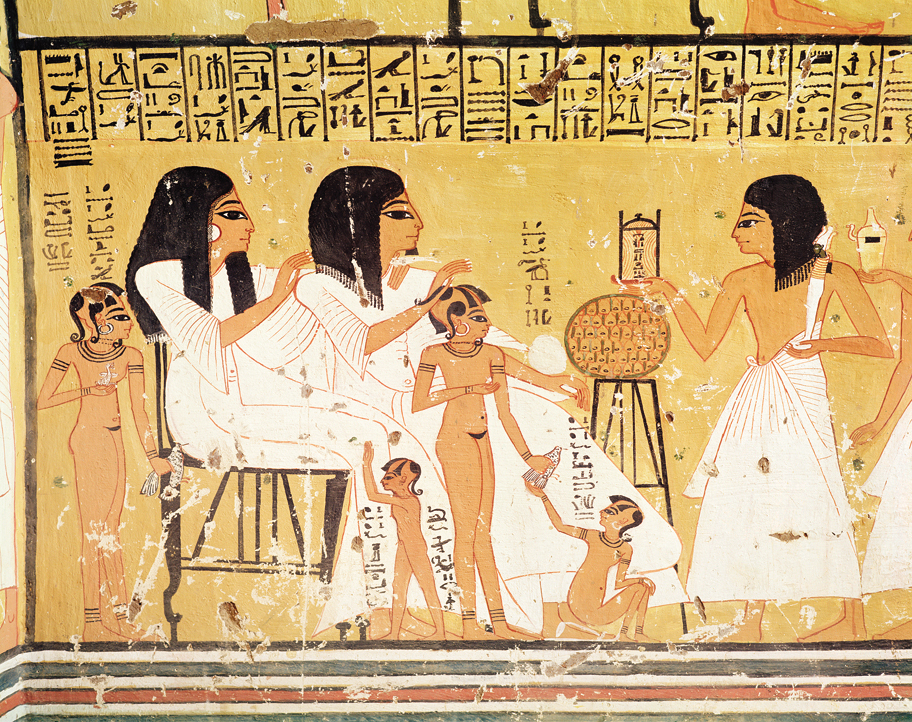A History of World Societies:
Printed Page 45
A History of World Societies Value
Edition: Printed Page 42
Egyptian Society and Work
Egyptian society reflected the pyramids that it built. At the top stood the pharaoh, who relied on a circle of nobles, officials, and priests to administer his kingdom. All of them were assisted by scribes, who used a writing system perhaps adapted from Mesopotamia or perhaps developed independently. Egyptian scribes actually created two writing systems: one called hieroglyphics for engraving important religious or political texts on stone or writing them on papyrus made from reeds growing in the Nile Delta, and a much simpler system called hieratic that allowed scribes to write more quickly and was used for the documents of daily life. Students learned hieratic first, and only those from well-

For Egyptians, the Nile formed an essential part of daily life. During the flooding season — from June to October — farmers worked on the pharaoh’s building programs and other tasks away from their fields. When the water began to recede, they diverted some of it into ponds for future irrigation and began planting wheat and barley for bread and beer, using plows pulled by oxen or people. From October to February, farmers planted and tended crops, and from February until the next flood, they harvested them. As in Mesopotamia, common people paid their obligations to their superiors in products and in labor. People’s labor obligations in the Old Kingdom may have included forced work on the pyramids and canals, although recent research suggests that most people who built the pyramids were paid for their work. Some young men were drafted into the pharaoh’s army, which served as both a fighting force and a labor corps.
The lives of all Egyptians centered around the family. Just as in Mesopotamia, marriage was a business arrangement. A couple’s parents arranged the marriage, which seems to have taken place at a young age. Once couples were married, having children, especially sons, was a high priority, as indicated by surviving charms to promote fertility and prayers for successful childbirth. Boys continued the family line, and only they could perform the proper burial rites for their father. Most Egyptian men had only one wife, but among the wealthy some had several wives or concubines. Ordinary women were expected to obey their fathers, husbands, and other men, but they possessed considerable economic and legal rights. They could own land in their own names, operate businesses, and testify in court. Literature and art depict a world in which ordinary husbands and wives enjoyed each other’s company.